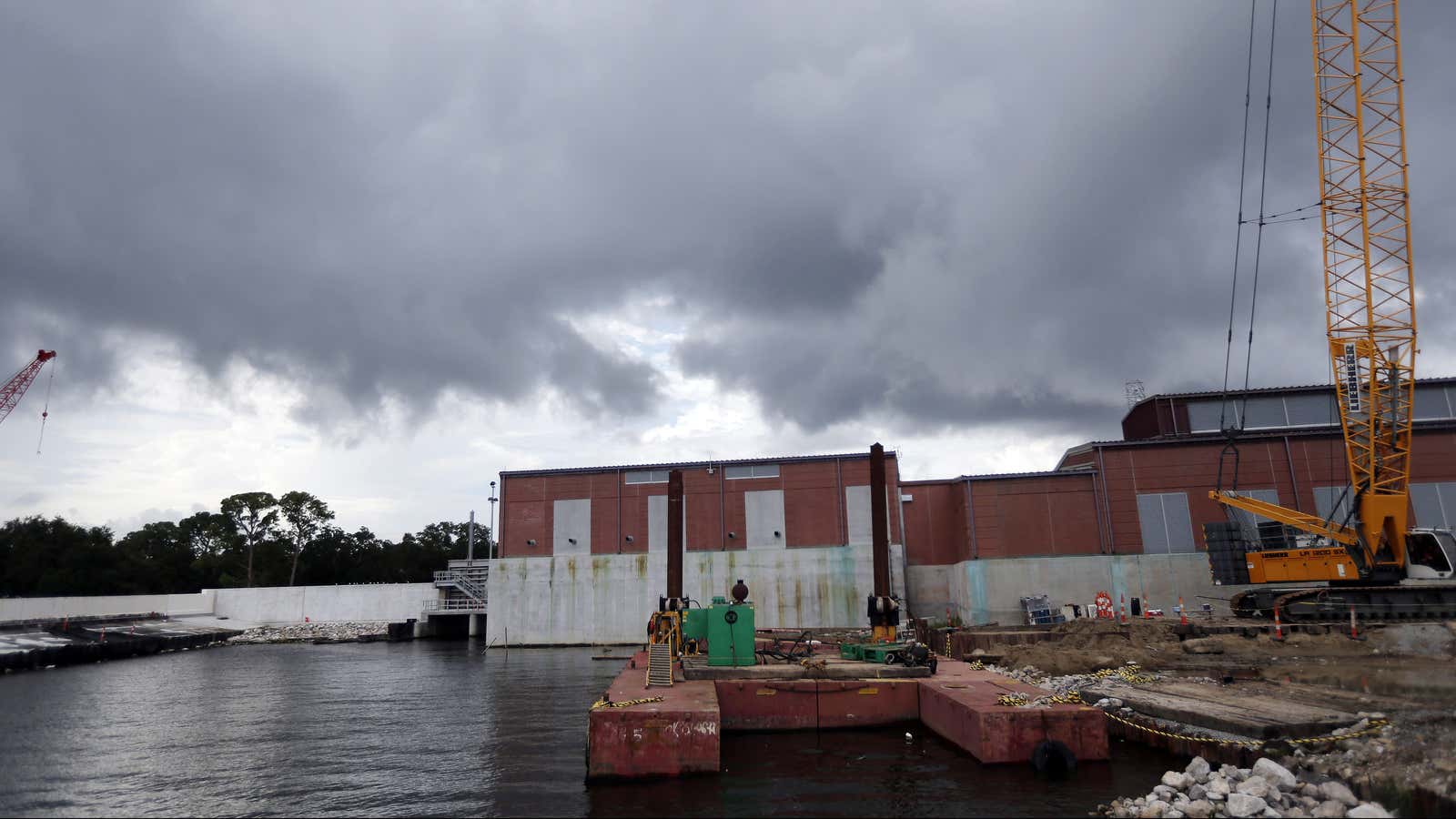In 2005, Hurricane Katrina breached the levees and flood walls meant to protect New Orleans, Louisiana—with horrific results. In the following decade, the US Army Corps of Engineers spent $14.5 billion strengthening the city’s protection against hurricanes with flood gates, pumping stations, and barriers.
But as Hurricane Nate, now expected to be a category 2 storm by the time it makes landfall Saturday night (Oct. 7), approaches the northern Gulf Coast, locals face a different worry: the city’s century-old drainage system. Here’s what New Orleans is doing to prepare for the storm.
“We’re not where we want to be with our pumping capacity”
Heavy storms over the summer alerted the public to weaknesses in New Orleans’ drainage system, as pump and turbine failures left residents’ homes and businesses flooded. The New York Times explains that the city’s aging drainage system features “‘screw pumps,’ first installed about 100 years ago, that use jumbo corkscrews to create siphons, the way sucking on a drinking straw can lift water out of a glass. The water then flows into a different set of pipes that empty into Lake Pontchartrain and other nearby bodies of water.”
The city scrambled to fix the problems in time for peak hurricane season, and mayor Mitch Landrieu said Thursday that the system was operating at 92% capacity, with 108 of the city’s 120 drainage pumps working properly. “We have plenty enough power and plenty enough pumping capacity to handle those potential rain events,” he said at a press conference.
But the drainage system is far from perfect. The New Orleans Times-Picayune reports, “Three major pumps—one on the 17th Street Canal, one at City Park, and another in Algiers—were out of commission as of Thursday morning. Also, five of the city’s 29 smaller pumps at underpasses were not working.” New Orleans councilman Jason Williams said Thursday, “We’re not where we want to be with our pumping capacity, but we’re better than we were.”
Three to six inches of rain are expected to fall across the region during the storm, and some areas might experience twice as much, according to the New Orleans Advocate. “When you get 5 to 10 inches of rain in two or three hours, you’re going to expect to see some flooding,” regardless of how many pumps are operating, Landrieu said, according to the Advocate.
Mandatory evacuations
Mandatory evacuation orders have been issued for people outside the city’s levee system. After noon on Saturday, “officials will close the gate in the floodwall to shore up the city’s levee protection system,” putting residents outside the gate at high risk, according to the Times-Picayune.
Officials expect a storm surge as high as six to nine feet in the eastern part of the city. Residents can decide whether to stay in their home or go to a shelter, where they are advised to bring clothes, toiletries, identification, bedding, and other items of primary necessity. The city has a plan to assist in mandatory evacuation, picking up people in 17 different locations and transporting them to the nearest shelters.
Curfew
A citywide curfew is in place beginning at 7 pm Saturday. The public transportation system will also shut down at that time. Several flights out of New Orleans airport have been canceled, and the airport will stop operations at 6 pm.
Other provisions
New Orleans recommends that people planning to shelter in place acquire three days’ worth of food, three gallons of water, a manual can opener, flashlights, and first-aid kids. The city also recommends bringing pets indoors and preparing for the possibility that strong winds may cause possible power outages.
Residents can also pick up sandbags to help with possible floods at several locations throughout the city.
Aftermath
Nate is likely to quickly weaken and move out of the area once it’s hit New Orleans, though flooding and power outages could continue long after. According to the authorities, certain areas of the city could be without power for up to a week.
You can follow the storm’s progress here:
[protected-iframe id=”d1e651ac21a6c74bd1a32cd67c516c31-39587363-95862106″ info=”https://project.wnyc.org/hurricane-tracker/index.html?year=2017&storm=nate” width=”100%” height=”760″ frameborder=”0″ scrolling=”no”]
